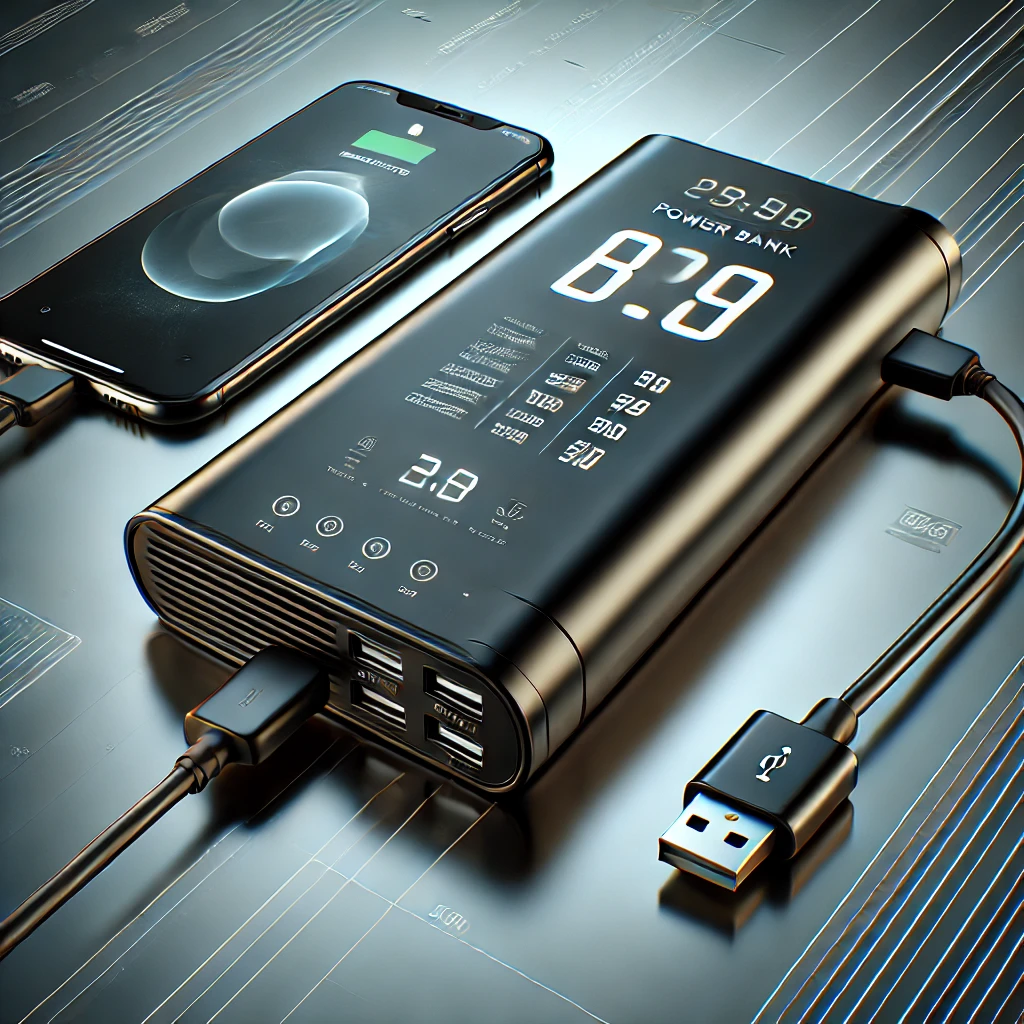Introduction
In an era where smartphones, tablets, and laptops have become essential tools for communication, work, and entertainment, battery life remains a major concern. Whether you are traveling, commuting, or spending long hours away from a power source, a portable charger, commonly known as a power bank, ensures your devices stay powered throughout the day.
Power banks are compact, rechargeable battery packs designed to store energy and transfer it to electronic devices when needed. They come in various capacities, sizes, and features, ranging from small pocket-sized models to high-capacity versions capable of charging multiple devices simultaneously.

What Are Portable Chargers and Power Banks?
A power bank is an external battery that stores electrical energy and allows you to recharge your devices on the go. It is a convenient solution for keeping smartphones, tablets, laptops, and other USB-powered gadgets operational when traditional power sources are unavailable.
How Do Power Banks Work?
Power banks function as rechargeable battery packs. They are charged via an external power source (such as a wall outlet or USB port) and later transfer this stored energy to other devices through USB, USB-C, or wireless connections.The charging speed and efficiency depend on factors such as battery capacity (mAh), output wattage, and charging technology (e.g., Quick Charge or Power Delivery).
Types of Power Banks
Power banks come in various types, each designed for specific uses:
1. Standard Power Banks
●Small and lightweight
●Ideal for charging smartphones and small devices
●Capacity: 2,000mAh – 10,000mAh
2. High-Capacity Power Banks
●Suitable for charging multiple devices, including tablets and laptops
●Capacity: 10,000mAh – 50,000mAh
●Often support fast charging technologies (e.g., USB-C Power Delivery)
3. Solar Power Banks
●Feature built-in solar panels for charging via sunlight
●Ideal for outdoor enthusiasts, campers, and travelers
●Usually equipped with water-resistant and rugged designs
4. Wireless Power Banks
●Support Qi wireless charging
●Eliminate the need for cables
●Work with compatible smartphones, smartwatches, and earbuds
5. Laptop Power Banks
●Designed to charge MacBooks, Windows laptops, and other high-power devices
●High output (e.g., 30W – 100W) with USB-C PD support
Key Features to Consider When Buying a Power Bank
●Choosing the right power bank requires understanding key technical specifications and features:
1. Battery Capacity (mAh – Milliampere Hours)
●Determines how much power the bank can store and deliver
●Example: A 10,000mAh power bank can charge an average smartphone 2-3 times, while a 20,000mAh power bank can charge it 4-6 times
2. Charging Speed (Wattage & Amperage)
●Standard charging: 5V/1A or 5V/2AFast charging: 18W, 30W, 45W, or higher (Power Delivery or Quick Charge)
●Laptop charging: Look for 65W – 100W USB-C PD power banks
3. Number and Type of Ports
●USB-A: Standard output for most devices
●USB-C: Supports fast charging and high-power output
●Micro-USB: Typically used for charging the power bank itself
●Wireless charging: If you need cable-free convenience
4. Build Quality and Portability
●Compact power banks are ideal for everyday carry
●Larger power banks are better for extended travel but may be heavier
●Rugged, water-resistant designs are best for outdoor adventures
5. Safety Features
●A high-quality power bank should include:
●Overcharge protection (prevents battery damage)
●Short-circuit protection (avoids electrical hazards)
●Temperature control (prevents overheating)
6. Brand Reputation & Warranty
●Invest in power banks from reputable brands like Anker, RavPower, Xiaomi, Baseus, and Zendure, which offer certified safety standards, high efficiency, and extended warranties.
Best Practices for Using and Maintaining a Power Bank
To extend the lifespan of your power bank and ensure reliable performance:
✅ Charge it fully before first use
✅ Avoid overcharging or completely draining the battery
✅ Use high-quality cables for efficient charging
✅ Keep it in a cool, dry place to prevent overheating
✅ Check for firmware updates (for smart power banks with software controls)
Final Thoughts
A portable charger or power bank is a must-have accessory in today’s connected world. Whether you need a small, pocket-sized charger for daily use or a high-capacity power bank for long trips, selecting the right one depends on factors like capacity, charging speed, safety features, and portability.
Investing in a high-quality power bank ensures that you never run out of battery when you need it the most.

